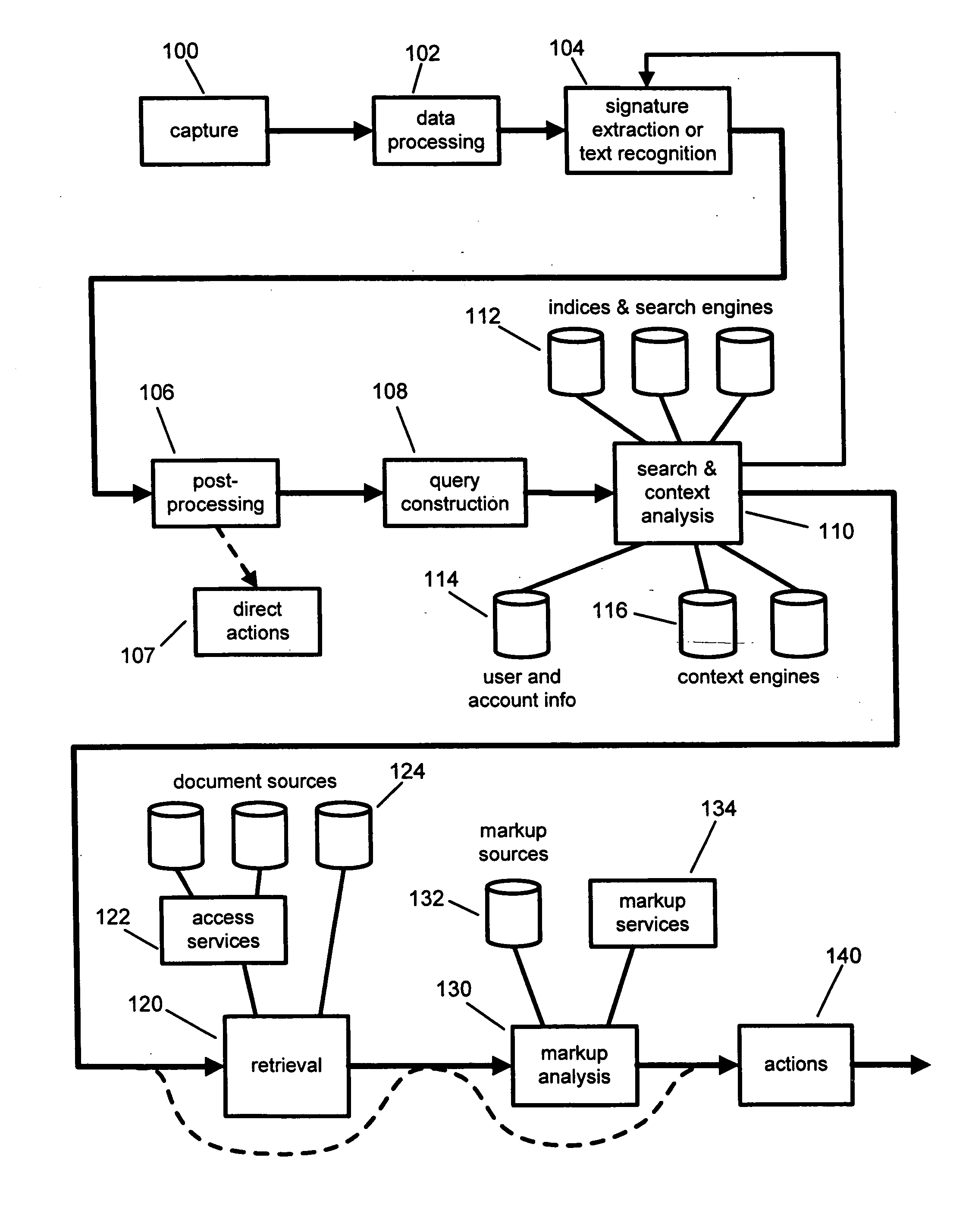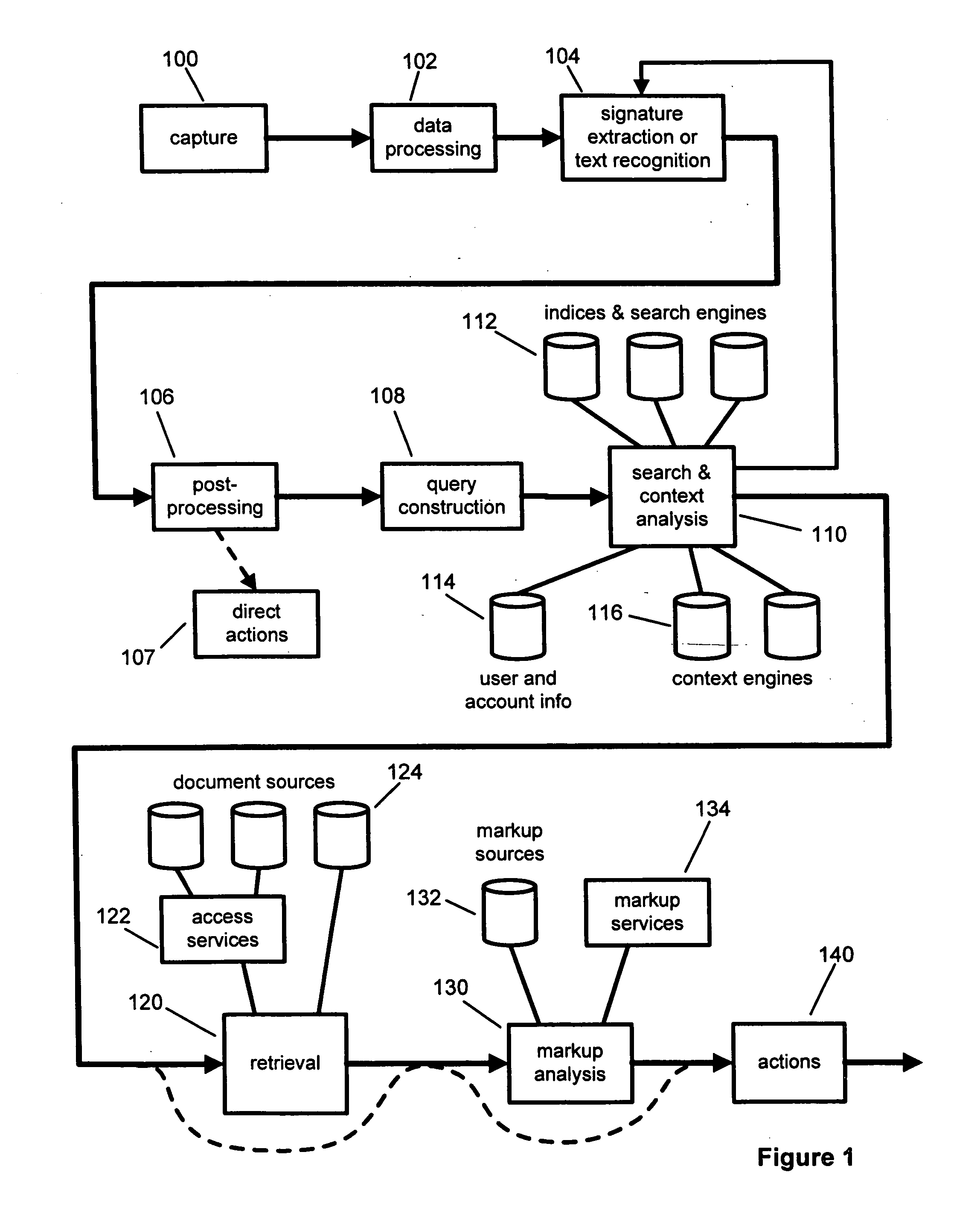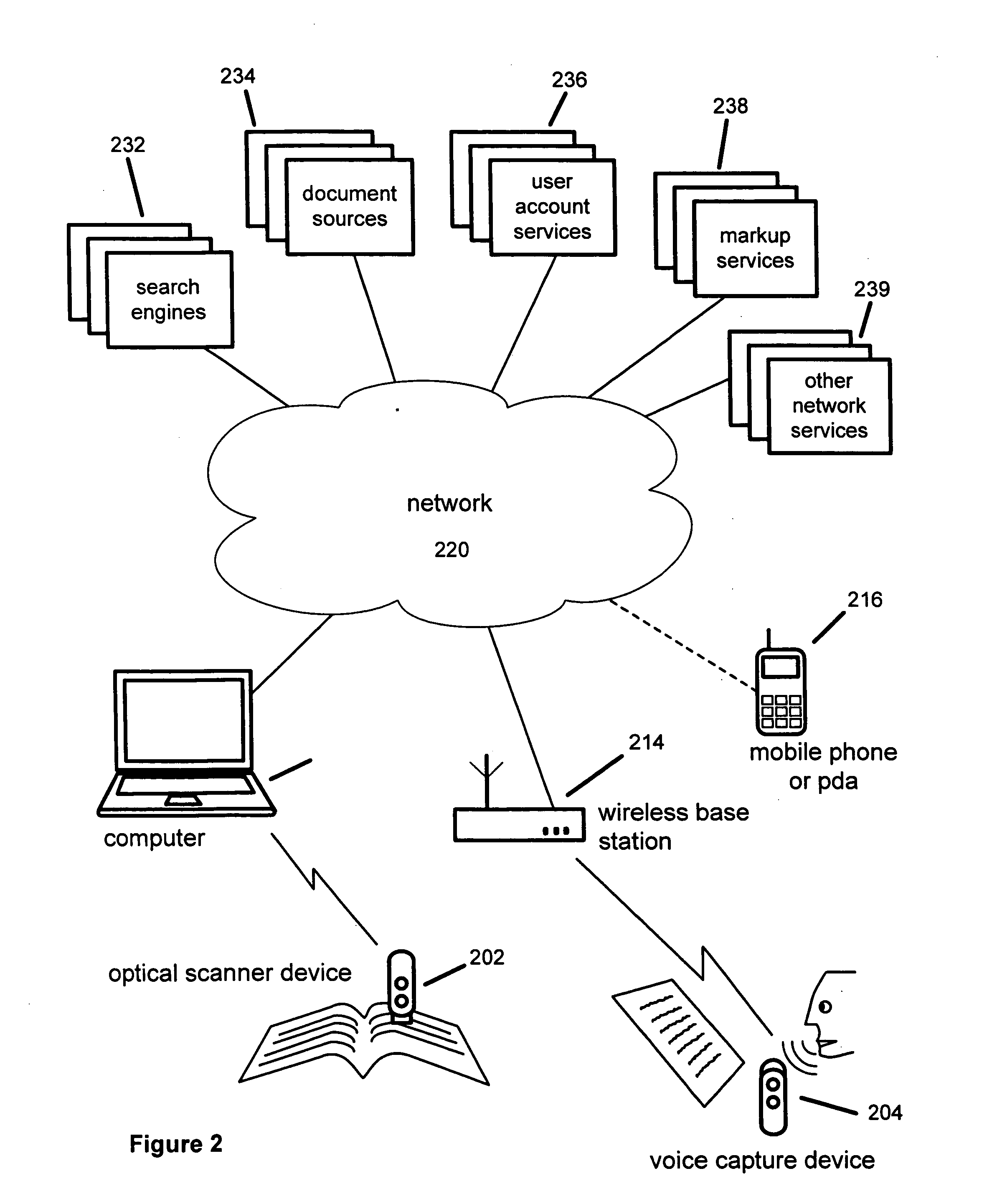If the printed document is a gateway to extra materials and functionality, access to such features can also be time-limited.
The
paper document will, of course, still be
usable, but will lose some of its enhanced electronic functionality.
This may be desirable, for example, because there is profit for the publisher in receiving fees for access to
electronic materials, or in requiring the user to purchase new editions from time to time, or because there are disadvantages associated with outdated versions of the printed document remaining in circulation.
In some cases, a document will be available in
electronic form, but for a variety of reasons may not be accessible to the user.
There may not be sufficient
connectivity to retrieve the document, the user may not be entitled to retrieve it, there may be a cost associated with gaining access to it, or the document may have been withdrawn and possibly replaced by a new version, to name just a few possibilities.
The scanning device may also have very limited
processing power or storage so, while in some embodiments it may perform all of the OCR process itself, many embodiments will depend on a connection to a more powerful device, possibly at a later time, to convert the captured signals into text.
Lastly, it may have very limited facilities for user interaction, so may need to defer any requests for
user input until later, or operate in a “best-guess” mode to a greater degree than is common now.
Many of the actions made possible by the
system result in some commercial transaction taking place.
The user may capture a particular fragment of text knowing that some commercial opportunity will be presented to them as a result, or it may be a side-effect of their capture activities.
In a traditional paper publication, advertisements generally consume a large amount of space relative to the text of a newspaper article, and a limited number of them can be placed around a particular article.
For example, the opportunity to purchase a sequel to a novel may not be available at the time the user is reading the novel, but the
system may present them with that opportunity when the sequel is published.
Some OSs include support for speech or
handwriting recognition, though it is less common for OSs to include support for OCR, since in the past the use of OCR has typically been limited to a
small range of applications.
The second part, however—locating a particular piece of text within a document and causing the
package to scroll to it and highlight it—is not yet standardized and is often implemented differently by each
package.
The descriptions in the following sections are therefore indications of what may be desirable in certain implementations, but they are not necessarily appropriate for all and may be modified in several ways.
feedback on the scanning process—user scanning too fast, at too great an angle, or drifting too high or low on a particular line
Even when the device is in close association with a
host machine that has input options such as keyboards and mice, it can be disruptive for the user to switch back and forth between manipulating the
scanner and using a mouse, for example.
It can be inconvenient for the user to put down the
scanner and start using the mouse or keyboard.
Such data has never really been available before for paper documents.
There are, of course, substantial privacy issues to be considered with any distribution of data about what people are reading, but such issues as preserving the
anonymity of data are well known to those of skill in the art.
For published documents that have a wider distribution, the tracking of individual copies is more difficult, but the analysis of the distribution of readership is still possible.
In many situations, the user will also not just be capturing some text, but will be causing some action to occur as a result.
The SimpleScanner does not have sufficient
processing power to perform any OCR itself, but it does have some
basic knowledge about typical word-lengths, word-spacings, and their relationship to
font size.
This has not been the case for scanners in the past; even the smallest hand-held devices have been somewhat unwieldy.
This is acceptable when scanning a business report on an office
desk, but may be impractical when scanning a
phrase from a novel while waiting for a
train.
Such voice capture is likely to be suboptimal in many situations, however, for example when there is substantial
background noise, and accurate voice recognition is a difficult task at the best of times. The audio facilities may best be used to capture voice annotations.
 Login to View More
Login to View More  Login to View More
Login to View More 


